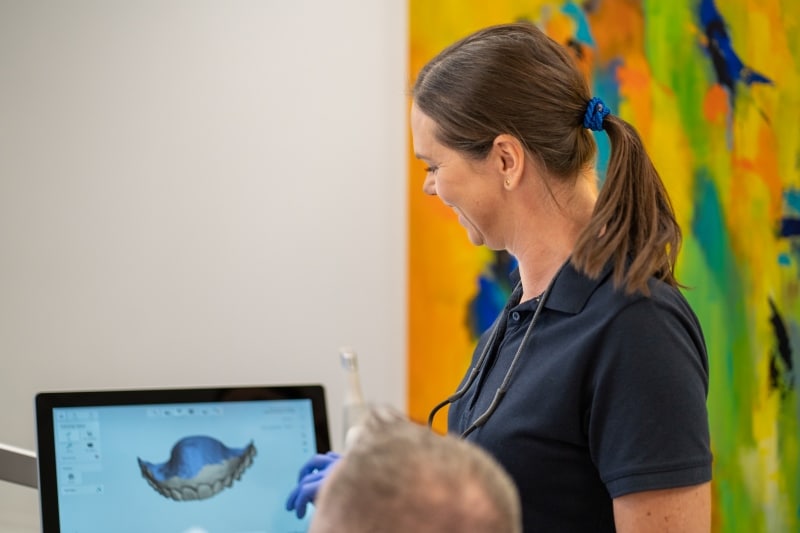ORTHODONTICS – WE OFFER CLEAR ALIGNERS FROM NUVOLA
We straighten teeth on adults with clear and virtually invisible braces, which are without metal brackets.
Why straighten teeth on adults? There could be a number of reasons for doing so. Tooth decay could occur due to malaligned teeth. If you fix an over- or underbite, you can prevent further damage to the teeth. As a part of a larger cosmetic treatment where plastic or porcelain is fitted to the front teeth at a later date, it can be more beneficial for teeth health to rearrange the teeth, therein requiring less enamel to be polished away! Braces could also be a purely cosmetic request – something you have always been disappointed about, or something in your smile that has worsened from what it initially was. The ultimately kindest cosmetic treatment is actually to rearrange the placement of one’s teeth, so no polishing or physical intervention is needed at all.

We can offer you tooth straightening without train rails here at Valby Station ????
ORTHODONTICS OF THE HIGHEST QUALITY WITH THE NUVOLA APPLICATION
We use the English-Italian aligner system Nuvola from our laboratory GEO Lab Orthodonzia in Rome.
Valby Tand – Tandlægerne ved Valby Station works hard to give you beautiful teeth!




